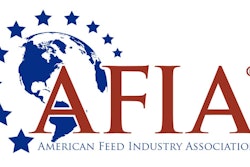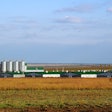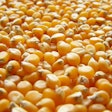
Maltese authorities have reported a number of improvements following an official European Commission (EC) audit of feed safety carried out around six months ago.
While finding many positive elements in the official controls in this — the smallest European Union (EU) member state — the reports by the EC’s Directorate-General for Health and Food Safety (DG SANTE) had outlined “numerous shortcomings” in the implementation of official controls covering feed hygiene.
“The many shortcomings found undermine the effectiveness of official controls on feed,” according to the DG SANTE’s report. From these, the body made a series of recommendations to the local authority to rectify the shortcomings, and to improve the effectiveness of official national controls on feed.
Audit identifies areas of weaknesses in feed hygiene
The audit was carried out over an 11-day period of this year, as part of a program that aims to verify that official controls in the area of feed hygiene in EU member states comply with the relevant regulations and legislation of the European Parliament and European Council.
As well as meetings with the competent authority in Malta — the Veterinary Regulation Directorate (VRD) — auditors visited two manufacturers of compound feed, two manufacturers of feed materials and two feed distributors.
Receiving an overall positive reaction from the inspection team were Malta’s procedures for training national inspectors, as well as guidance documents, procedures, and checklists. Furthermore, it commented positively on the risk-based approach used in the planning of official feed sampling. However, DG SANTE noted, a risk-based approach to inspections was under development at the time.
Of the aspects that required attention, the audit report mentioned some deficiencies in the Hazard Analysis and Critical Control Point (HACCP) plan. Specifically, this related to the identification of hazards and cross-contamination tests.
Another issue was unsatisfactory practices in the collection and storage of retained samples.
For both medicated and non-medicated feeds, legal prescription and labeling requirements were not always adhered to, the auditors found.
Lastly, the report highlighted issues over the designation of testing laboratories, sampling procedures, and the assessment of lab test results.
Maltese authority takes corrective action
Following the audit, nine recommendations were made to the national authority, highlighting ways to improve feed controls.
In response to the audit’s findings and recommendations, the VRD’s progress report has recently been published. It includes a series of actions to address each of the recommendations.
For example, on the sampling issues, the authority has called for corrective actions by all four of the inspected companies so that two samples are taken of each batch of feed raw materials (including amino acids and premixes). One is to be retained and one for in-house analysis. All of these samples are to be sealed on collection, and kept until their shelf life expires.
Furthermore, the audit revealed some gaps in labeling processes.
From six entities visited by the auditors, the VRD has called for corrective action on the specification of identification numbers for feed additives. For vitamin A and other vitamins with established limits, concentrations are to be corrected in line with EU regulations. In feeds for ruminants, the magnesium concentration must be declared, as must the methionine level in pig feed.
Additionally, instructions are to be included with additives that have established maximum limits, as well as for the use of all complementary feeds and medicated feeds. For all bulk feeds, a best-before date will be specified in future.














